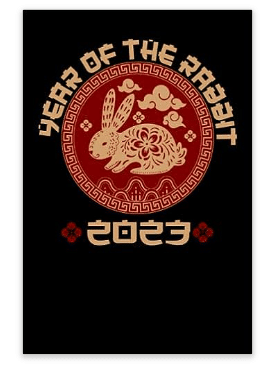
In a world that spins more connected every day, there’s an increasing desire to embrace the beautiful tapestry of cultures we share. But can we capture this universal sentiment in the Amazon realm of planners and journals?
Let’s embark on a journey of global inspiration, creative inclusion, and, yes, potentially greater sales. We’re about to explore the ‘how-tos’ of offering culturally diverse planners and journals that can truly speak to a worldwide audience.
The niche of culturally diverse planners and journals on Amazon KDP
Before we jump into the practical, value-adding tips and tricks, it’s important to answer one fundamental question.
Is there a market for culturally diverse planners and journals?
The best way to find out is to exploit the powerful features and capabilities of Book Bolt. We used the tool’s Keyword features to determine the number of searches users perform using niche-related keywords and phrases.
Our research helped us reveal the following data:
- japan journals – 5 134 – no data
- italy journal – 4 811 – high
- asian journals india and japan – 4 380 – no data
- spain journal – 3 164 – high
- spring journal a journal of archetype and culture – 2 621 – no data

The numbers indicate that there is a certain demand for culture-specific journals and planners, although not as significant as that of other niches. And although this may be off-putting for some sellers, others may perceive it as a golden opportunity.
Why? Because niches with lower demand are usually also the ones with lower competition.
For new sellers or less experienced authors in the market, ranking for less competitive keywords will be an achievable mission. On the other hand, gaining visibility for highly competitive words with search volumes of 100,000 or more will likely consume twice the energy and possibly result in no success.
But creating a culturally diverse journal or planner requires preparation and most importantly – a strategic approach.
In the following sections, we share a few vital tips for creating culturally diverse planners and journals to sell internationally.
How to create journals and planners for a global audience
Most of our readers are aware that there are plenty of different markets available to Amazon KDP merchants. But how do you make your products attractive for all audiences across the globe?
If you want to guarantee that your endeavor will be a blast from the start, here’s what you’ll need to do.
Create adaptable book titles and covers
No matter the niche you’ve selected, the journal or planner title and cover are the first points of contact for potential customers.
When attempting to grab attention across the globe, it’s important to design these elements to attract an international audience. This means avoiding culturally specific idioms or phrases that may not be understood globally.
Opt for a universal language that resonates with different nationalities and cultures. For example, “Global Goals: Your Multicultural Planner for Success” is likely to appeal to a culturally mixed crowd.
On the other hand, a title like “In High Cotton: Your Southern-Style Planner” might confuse non-American customers who are unfamiliar with the phrase “in high cotton.”
Select a versatile niche
If you’ve read any of our other articles, you’ll have noticed that we’re quite big on niching down. Our research and analysis into the world of Amazon has repeatedly proven that choosing a strategic niche to penetrate is one of the most rewarding strategies for sellers.
However, while niching down can be a powerful tactic on most occasions, for a global product, versatility is key.
In this case, we recommend that your journal or planner cater to general needs that transcend borders. Think about shared human experiences like productivity, goal-setting, mindfulness, or gratitude.
For example, a gratitude journal or productivity planner can appeal to people in various cultures, as these concepts are widely understood and appreciated.
Go for culturally inclusive design
Design is another key component that you can’t afford to neglect if you’re aiming high with culturally diverse planners and journals.
Our advice is to use multicultural motifs and themes in your design to make your product feel inclusive and appealing to a wide array of users. This could mean including culturally diverse artwork, patterns, or symbols in your cover design or within the planner itself.
But remember, it’s critical to respect and properly represent all cultures. It’s essential to perform thorough research and avoid stereotypical or offensive representations.
For example, your journal’s pages could include borders with different traditional patterns from around the world, like paisley from India, Turkish geometric designs, or Greek key patterns.
 Multilingual considerations
Multilingual considerations
Overall, journals and planners are considered low-content books for a reason. They don’t contain much text. Still, don’t forget that multilingual considerations apply when selling to users from around the world.
If possible, consider incorporating multiple languages into your product or offering different language versions. For some products, this may mean simply altering the title text, while for others, it may require a bit more work.
Ultimately, this will broaden your journal or planner’s appeal to non-English speaking populations.
For instance, you could offer your product in the top five most spoken languages worldwide: Mandarin, Spanish, English, Hindi, and Arabic. If it’s not possible to include all these languages in one edition, consider creating different editions for different language speakers.
Don’t forget about listing optimization
Listing optimization is a wide topic that would be impossible to cover in a few sentences. Perhaps the most important thing to keep in mind is that it’s precisely what enables your listings to be visible and easily discoverable to Amazon shoppers.
Think of optimizing your titles, descriptions, images, keywords, and more.
For an Amazon KDP listing sold internationally, you need to target keywords that have global appeal. Some of the most attractive keywords with global relevance include “productivity planner”, “multicultural journal”, or “global organizer.”
These should be relevant to your product, and widely searched by a global audience. Research these terms in Amazon’s search bar or use the keyword research tools available in Book Bolt for more detailed data.
Take advantage of the opportunity to present your product appropriately. Do this by creating a compelling product description that highlights the global usability of your planner or journal.
Invest time in market research
Don’t forget that being a successful seller often means satisfying a demand. To do so, understanding the cultural nuances of your global audience is key.
Do your research to become familiar with the preferences, habits, and needs of consumers in different countries. This could influence everything from your color choices to the layout of your planner or journal.
For example, in Western cultures, white often symbolizes purity, while in some Eastern cultures, it represents mourning. Understanding these differences can help you choose colors for your cover and interior that appeal to a global market.
Global holidays and observances
Finally, utilize international holidays and observances to your advantage.
The inclusion of such occasions and themes in your planner or journal serves to recognize the vast array of cultures that make up your customer base. This is a key element in making your product feel more globally inclusive.
Religious holidays
Adding religious holidays in your culturally diverse planners and journals involves moving beyond the standard calendar holidays. Rather than sticking to what is primarily recognized in Western countries, incorporate significant celebrations from around the world.
For instance, religious holidays such as Diwali (a significant festival in Hinduism), Eid (important in Islam), Hanukkah (from Judaism), and Vesak (Buddhist) could be included.
Cultural celebrations
Cultural celebrations are another addition. For example, include the Chinese New Year (or Spring Festival), which is celebrated by billions of people around the world. Another might be Carnival, known and celebrated in many countries like Brazil, Trinidad and Tobago, and even Italy, albeit in different forms.
 National holidays
National holidays
National holidays are another “must have”. Recognize Canada Day, Bastille Day in France, Independence Day in the U.S., or Australia Day, amongst others. It is important to be aware, though, of any controversy surrounding certain national holidays, as not all are celebrated by every citizen within different countries due to historical or cultural reasons.
International observances
International observances could also help you make your culturally diverse planner or journal more attractive. These are dates recognized by international bodies like the United Nations, and they include days like International Women’s Day (March 8), World Environment Day (June 5), or International Day of Peace (September 21).
These are just some examples, but the idea is to make sure your planner or journal represents the diversity of your intended audience. Doing so not only increases the usability of your product but also demonstrates a level of cultural awareness and sensitivity that can set your brand apart.
Wrapping up
In a nutshell, selling journals and planners to a culturally diverse, global market doesn’t have to be as challenging as it sounds. With a bullet-proof strategy and a consistent approach, you can turn tables and build a reputation as an internationally successful low-content book seller.
Don’t forget that all of this is possible via data-based decisions. Use Book Bolt’s capabilities to perform essential research and make the right choices along the way.
 Multilingual considerations
Multilingual considerations National holidays
National holidays